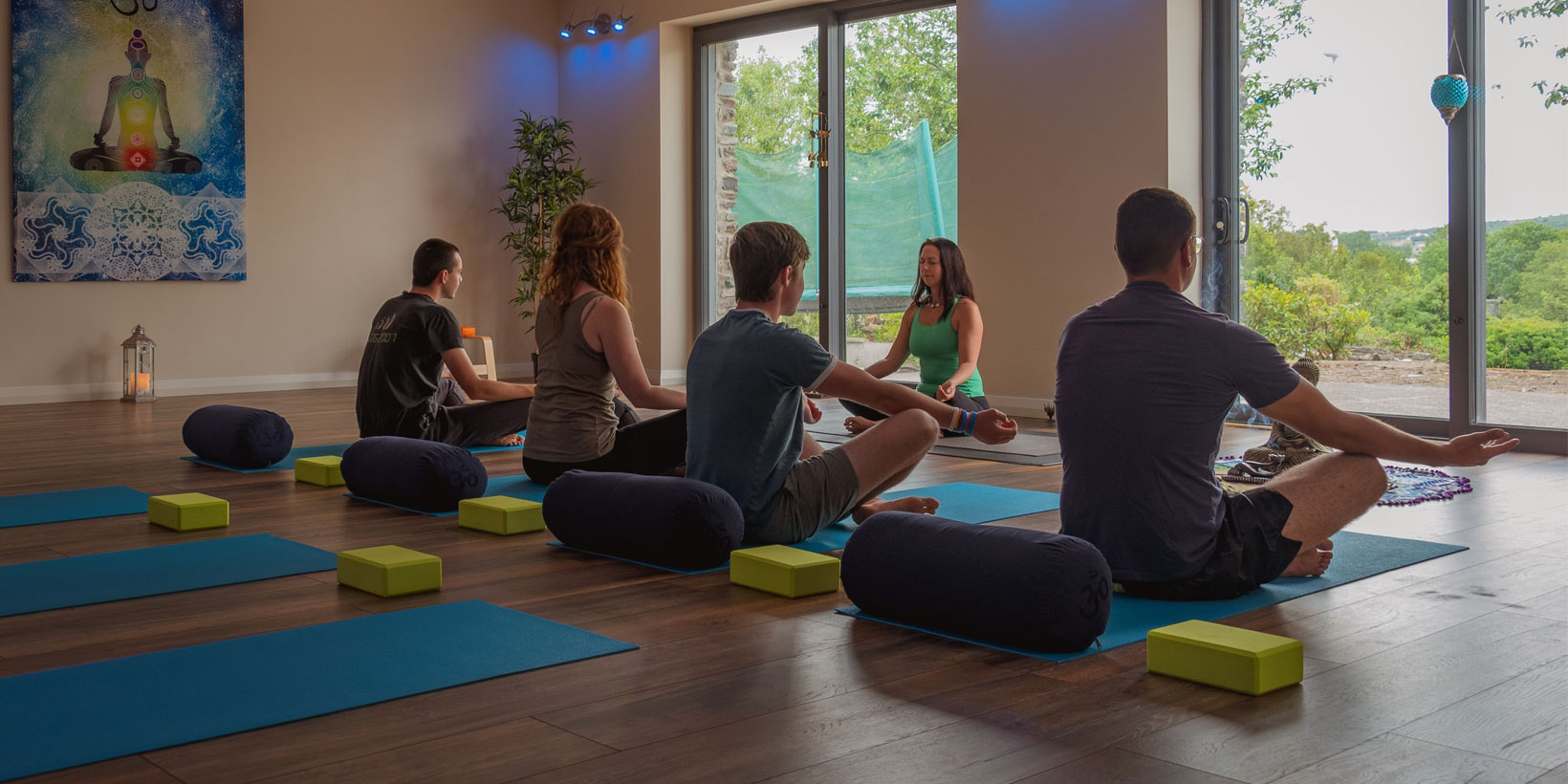
Great Online Courses and Workshops Don’t Happen Overnight
Some of our most unforgettable experiences as yogis whether professional or practitioner have been our teacher trainings and workshops. What made them great? Was it the paradise that you got to explore for the next 10-20 days? Maybe it was the energy during the workshop that got you rejuvenated or inspired to deepen your practice? The enchantment that lies in retreats and courses isn’t something that just pops up. You have to plan for it.
These days courses and retreats seem to be unreachable but our industry is slowly adapting with the help of today’s technology. Even our very own Momoyoga has solutions for you!
The enchantment that lies in retreats and courses isn’t something that just pops up. You have to plan for it.
You have to be three steps ahead of the weather, the environment, your students’ needs and wants, the resort’s or studio’s policies, etc. Lastly, you need to ensure that all these factors will not impede your teaching objectives for it all.
In this short guide, we will go through the basics of course and workshop planning. What factors do you need to consider, What to specifically start with so you don’t get overwhelmed, some resources you can apply to your business, mistakes that newbies make and many more so stick around!

Workshops
A workshop is:
- a short intensive lesson plan that dives deep into a specific area of practice
- It can be finished within a few hours or a couple of days
- it is an overview of what your classes will be like if you sign up.
- Its a chance for your students to get to know the teacher.
- Students will gain insight to the teacher’s regular classes like the pacing of lessons, camaraderie, expectations, etc.
I got into workshops to introduce people to Aerial Yoga. It was a way for me to showcase my skill and teaching style. Whether it works out or doesn’t, I consider it a win because I get exposure either way, Still–i have a 90% success rate.
Courses
A course is:
- a set of classes that aims for the student acquire a new skillset
- Also a means to ascend your level of skill within a time frame
- It has a progressive form of syllabus
- Each class is done ‘workshop style’, in that it takes a minimum of 2 hours
- Depending on the end-goals, a course can last from a few days to several weeks
I thought that a course would be a bit easier after having several workshops under my belt. I was wrong. The structure of a course has to be much more organized for you to meet your expectations. When I made mine, it was disastrous because I didn’t define nor design each class to progress one on top of the other. Half my students continued while the other half quit midway. One of the mistakes I’ve pinpointed was that lack of structure. Which is why we are defining these 2 terms first! Believe me it will pay off later.

What do you want to teach?
What is the lesson you want to give that your students cannot acquire from other teachers? Creating a workshop or course has to be unique to your brand of yoga otherwise you face droves of competition. So take some time to internalize what you bring to the table. Don’t worry so much if it’s been done or not. It’s not about being revolutionary, Its about the combination of offerings that you can provide your students that make an effective workshop or course. Maybe, You specialize in Yin yoga and anatomy and physiology. Why not make a workshop on the anatomical and physiological effects of yin yoga with an extended yin yoga flow. If you’re an Ashtanga teacher that likes to journal. Make a course on the primary series of Ashtanga and start the habit of journaling your practice. There are always students for your methodology. Don’t be afraid of not breaking that glass ceiling, you don’t have to.
What do you require for your course or workshop?
What equipment or type of venue do you require for your event/s? Because you don’t have to be tied to your community in order to make a course or workshop. You can choose an exotic location, or a cabin that can accommodate a small group, It can even be done online. List everything down along with an estimated cost for each requirement, You’ll need that later.
Here’s what you’ll need to sort through:
- The type of space you’ll need
- Will the event be held in the city, a retreat setting or online?
- Who are you teaching for?
- How much is the rent per week of your location?
- How many people would you like to serve at minimum and maximum?
- What types of equipment will you need? Bolsters, mats, pillows, candles, list everything down to the last incense stick.
- How many days will you need to get through your teaching plan?
What do you expect your students to learn after your workshop or course?
Let’s go back to the story about my disastrous first course. Like I said, my student quit midway because of the lack of refinement in my planning. As I took some time to reflect on what went wrong, I realized that I never really set any end-game plan for each day of my course. My students didn’t have proper direction. Having a clear set of short-term and long term goals for your students is as important as setting an intention when we practice yoga. It gives us something to strive for. Your goals should answer the question: What will my students gain after this workshop or course is over?
Your Teaching Plan
By now you have probably made your decisions and have defined your course or workshop. Now it’s time to plan for your teaching hours. I find that dividing your time with a well-set itinerary maximizes your teaching day. Students need to feel that they didn’t waste their time or money. If they feel like they’re not getting anywhere with you they won’t come back. Worse, they’ll leave a negative review.
To create your teaching plan,You need to…
- arrange your lessons in a progressive sense that contain realistic goals to reach each session
- have classes that are in accordance with your student’s level
- Have easily adaptable classes in case you have a mixed level group ( which is 95% of the case )
- have short term goals that contribute to your long-term objectives.
- Have regressions and progressions for weaker and stronger students.
- Focus your plan on what is needed, not what you are excited to teach.
Calculations
Ah the dreaded ‘Cost Convo’! As a yoga teacher I understand how this is such a touchy subject for us because of our industry’s philosophy. How do we mindfully address the topic of money in a way that doesn’t cheapen our beliefs?
For me, Calculating cost and worth boils down to these factors:
- Acceptance - Accepting the need to charge for your services is key. We are not monks, we are teachers and that’s ok! If it still bothers you, add a charitable feature into your workshop. I once attended an Ashtanga workshop that donated half of it’s proceedings to a local animal shelter. And all of the cats that joined our workshop were adoptable. It was a complete success and we all felt great afterwards.
- Practicality - Practicality is where our list of requirements come in. What do you need to make this course or workshop a success? Factor in everything from accouterments to accents. Part of practicality is also taking into account what you need to make ends meet and save a little bit. Our industry is about creating a peaceful space in every sense of the word. It is not just about your students’ peace of mind but yours as well.
- Worth - What amount is worth your time? This is probably the hardest part of the calculations process because this needs much internalization. It comes down to balancing your self-worth as a teacher while creating an attractive offer your students are willing to shell out for. take some time to come up with a value that you are happy with. One that you won’t have to increase for the next couple of years and can easily be adapted when you change from studio to retreat setting
- Accessibility - After you’ve thought of your pricing, a good idea is to cross reference your prices with similar courses and retreats. It helps to avoid crossing the line. Reach out to some teachers. They will be more than willing to share their experience. It also helps to read up on a few articles. Our Momoyoga blog has a helpful interview on organizing retreats.
Having a clear set of short-term and long term goals for your students is as important as setting an intention when we practice yoga. It gives us something to strive for.
Let’s recap the essentials! First, you need to define what you want to do. This will set the groundwork for your teaching plan. Secondly, what do you want to impart and what will you need in your special event? List it down to the last detail it will help with costing later. Define your short and long term teaching objectives. What do you want your students to leave with when your event is over? Plan your itinerary according to your goals in a timely manner. Your clients want to feel that their time was well-spent. Calculate practically, don’t be afraid to ask for what’s fair for your services. We are teachers who live in the present world.
I’m sure there are a myriad more facets of the planning process that you will go through when you start preparing for your specialized classes. May this article serve as a blueprint for you to go into detail as you see fit for your business.






